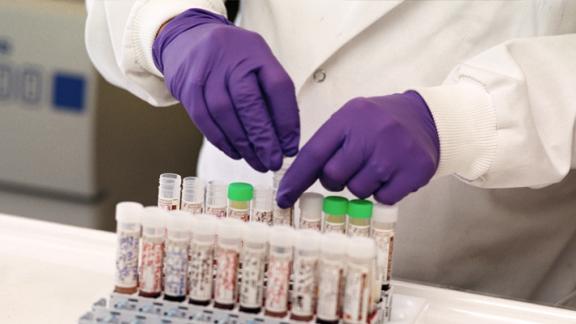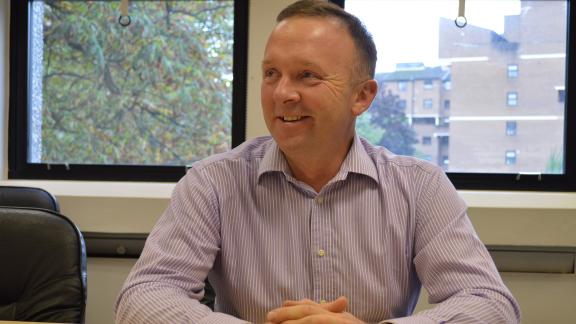Nudging younger people to help them grab a jab

Dr Layla McCay examines the potential causes of, and possible solutions to, the slower vaccine uptake in 18- to 29-year olds.
The COVID-19 vaccination programme has now officially been expanded to 16- and 17-year-olds and ostensibly this should be good news; more younger people now have access to a jab. But we know the rollout has been slow to get off the ground. The NHS now faces the interesting challenge of meeting demand for vaccines for younger people, while also figuring out new approaches to convert theoretical demand into jabs in arms.
Myths busted
The myth that younger people are not at risk from COVID-19 has been long busted. Earlier this month, it emerged that one in five of those admitted to hospital in England with COVID-19 is aged 18-34. This proportion is much higher than it was earlier in the crisis, and is partly because older people were vaccinated first, providing protection from serious illness that might otherwise have required hospital care. It is also likely linked to younger people now encountering more in-person work and social engagement, often before they have had the chance to be fully vaccinated.
The myth that younger people might not want to be vaccinated has also been busted, not least by the strong response from teenagers subverting the intention of ‘anti-vax’ Twitter hashtag #LeaveOurKidsAlone, pointing out their competence to weigh up the pros and cons, and showing an overriding desire to have the jab. And yet despite outstanding efforts by the NHS vaccine programme, vaccine uptake from younger people is moving more slowly than hoped – almost a third of 18- to 29-year-olds are yet to take up the offer, and many others have had just one jab so far.
This presents the NHS with three main challenges:
- As long as COVID-19 is in circulation, some people who catch it will become very unwell, either right away, requiring hospital care, or later on, requiring primary care, community, and/or specialist support for problems associated with long COVID. They also risk spreading the virus to others who, in turn, might go on to need NHS care.
- Even a low rate of hospital admissions for COVID-19 causes serious disruption to other services and can have knock-on effects on how rapidly the NHS can treat others, whether they are waiting for urgent or elective procedures.
- Vaccination sites run into problems when people do not turn up for scheduled appointments. NHS leaders have said this seems to be happening more with younger age groups, at this stage of the pandemic, which leaves these sites with the very real risk of having to waste doses.
"Younger people have been waiting patiently for their jabs, and now they finally have access, they are encountering a vaccination programme that was not designed for them."
But blaming younger people for delays in turning up for their vaccination is wrong. Younger people have been waiting patiently for their jabs, and now they finally have access, they are encountering a vaccination programme that was not designed for them. They may favour different approaches to making arrangements, have different types of locations they find convenient, and different timings to work around their commitments. Younger people are more likely to be in junior and in-person jobs that may offer less flexibility to pop out for a jab. They may have less, or no, access to a car, and find walk-in sites have poor public transport links or are hard to find. They may have educational commitments they can’t duck out of.
"Incentives may be helpful, but some may find them patronising."
Many of the differences between cohorts are not insurmountable – the most motivated will navigate the obstacles and make it work. We can see from the numbers that many already have.
But what of the others? Incentives may be helpful, but some may find them patronising (after all, the opportunity to receive a potentially life-saving jab is already strong incentive). There is a clear role for behaviour change psychology beyond bribery: targeted communication, including from respected peers, to help answer questions that young people may have about the vaccine, and leveraging the draw of affiliation with peer groups and role models are two such approaches.
Nudge theory may also offer answers.
Removing barriers and obstacles
In a system of healthcare bureaucracy that younger people might be less used to navigating, nudge theory means removing barriers and obstacles and presenting the easiest, most convenient opportunities to get a jab. Pop-up vaccination sites near young people’s most common work, study and leisure locations; smoothing the registration process; and making it easier to book and cancel appointments are some of the innovations the NHS is using to improve uptake.
In Newcastle, for instance, taking a mobile clinic down to the Quayside, complete with the humorous ‘waxed and vaxed’ tagline coined by and popular with some of this cohort, led to 140 people being vaccinated in a single day who had not made arrangements to attend a formal site.
Encouraging younger people to get the jab means genuinely adapting rather than retrofitting, to make the process so frictionless that if they want a jab, they simply get a jab.
Dr Layla McCay is director of policy at the NHS Confederation. Follow her and the organisation on Twitter @LaylaMcCay @nhsconfed.



